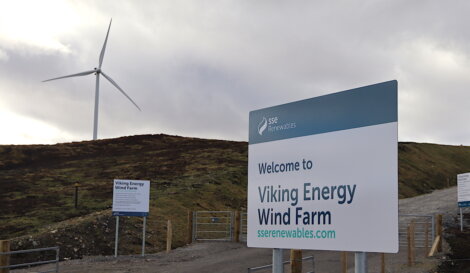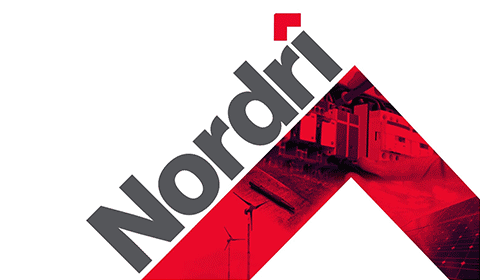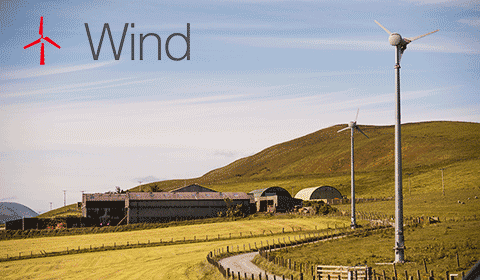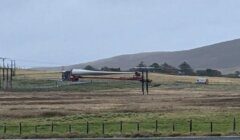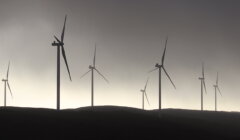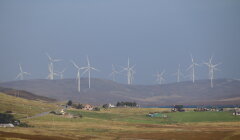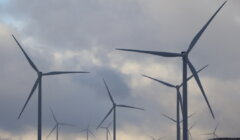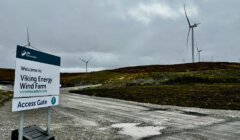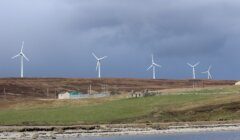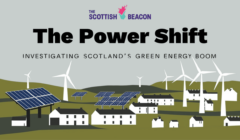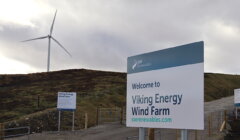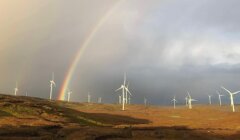Power Shift / From northern winds to southern grids: the roadmap of Shetland’s energy
This second piece of a series of articles by Erin Rizzato Devlin looks at national connections, mapping the journey of energy produced from a Viking wind turbine. This will follow the itinerary that the electricity produced in Shetland undergoes and show how this flows into the wider UK context.
OUR ENERGY travels miles, transforming from wind speed to electrical power, then being carried along the highways of the electricity network until it reaches our homes. For a Viking wind turbine, the journey is mostly directed southwards and presents a not insignificant contribution to the UK’s overall electricity production.
In recent years, Scotland has witnessed a steady increase of renewable energy capacity, with wind power being the main source of energy produced. Since last year, Scotland has witnessed a 14 per cent increase in renewable electricity, with a current capacity of 17.7 GW.
Today, Scotland alone hosts 4,871 onshore wind turbines, while England hosts 2,025, Wales 1,012 and Northern Ireland 1,314. If a map reflected each country’s turbines per capita, compared to the UK average, this is what it would look like:
The number of onshore turbines per capita in the whole of Scotland is almost seven times higher than the UK average. Of the other countries, Northern Ireland is the second highest (5 times the average), followed by Wales (twice the average) and England (below average with only 0.3).
Some of the Scottish islands host a far greater amount: while the Western Isles host almost nine times the UK average and Orkney reaches over 12 times, Shetland experiences the highest number of turbines per capita – 39 times higher than the UK average.
If we consider all active and consented onshore wind projects, Scotland is soon expected to generate 72.65 per cent of the UK’s onshore wind production, followed by England with 12.17 per cent, Wales with 7.88 per cent and Northern Ireland with 7.30 per cent. Of the UK’s total production, Shetland will contribute a considerable 660.4 MW – equal to 2.6 per cent.
Become a member of Shetland News
As of September 2024, there were 962 potential renewable energy projects either in planning or construction in Scotland with a capacity of 57.3 GW.
The renewable energy potential of Scotland is enormous, but there are important practical challenges including grid constraints, as well as the need to bring communities at the forefront of this debate.
From country roads to energy highways
Energy networks can be understood as a system of roads that transport electricity from where it is created to the homes and places where it will be used. Transmission networks are like motorways, connecting long distances at a fast pace.
Distribution networks, on the other hand, are the local roads that lead straight to our house. While transmission networks cover the leg of the journey from where energy is made to where demand is high, distribution networks cover the final part, transporting it directly to our doorsteps.
Once a turbine catches the wind in Shetland, the electricity generated by this is transmitted via the Kergord substation to Weisdale Voe. From here, the electricity leaves Shetland and reaches Caithness, on the mainland, travelling through the HVDC link’s 260km of cabling which connects Viking to the main grid.
Just as roads can become obstructed by traffic during rush hour, the electricity grid also becomes congested. Grid constraints are especially felt as energy consumption is growing and we are becoming more dependent on renewable resources which are often fluctuating, making it challenging to balance supply and demand in real time.
This often comes with power outages, higher energy costs, limited capacity for new renewable projects and, ultimately, higher emissions.
In its first year, Viking was expected to be one of the most productive wind farms in the UK, but is turning out to be one of the most heavily constrained due to bottlenecks in the national grid. Last year, the wind farm was ranked third in the UK for the highest amount of energy left unused.
Despite this, more large-scale developments are being pushed ahead as questions of capacity constraints, ageing grid infrastructure and long establishment processes (on average between 7-14 years) are not being addressed fast enough.
A spokesperson from SSEN Transmission said: “With Shetland playing a key role in Scotland and the UK’s clean power and energy security ambitions, we recognise there is a demand for more information on the scale of proposed development.”
When asked whether considerations around what constitutes ‘too much’ for Shetland are taken into account, SSEN did not respond.
“We will return in October to consult on proposed projects including our Shetland 2 HVDC Link, as we aim to provide more detailed information on our routeing and site selection options,” they added.
The limited capacity of the existing grid also poses a challenge for community projects as grid space is often allocated to developers first, while new or larger locally-owned projects are disadvantaged.
Local grids for local needs
Many places in Scotland show that is it possible to be connected to an electricity grid that addresses these challenges and opens up further local opportunities while making the system more decentralised, secure and resilient.
Microgrids, in fact, present an alternative way of harnessing Scotland’s energy. While self-supply microgrids have generation and demand on the same site, private wire networks link a supply of electricity to a single user through a private or exclusive connection.
An example of this is found in Stornoway, where the local council – unable to export excess energy from its turbine – integrated different renewable technologies to operate both a recycling facility and salmon hatchery through a self-supply microgrid.
Whole island systems are also not uncommon in Scotland, as many islands such as Canna, Eigg, Rum, Foula and Fair Isle are designed to serve communities whose demands for electricity are far away from the main power grid and as a result a connection would be too expensive.
These types of microgrids operate permanently in isolation from the main grid and they not only enable access to energy when the grid is too far away, but also add value to communities where renewable energy is more accessible.
“The biggest cost of being off-grid is balancing,” says Mark Hull, chief technology officer at Community Energy Scotland (CES). “These [examples] have a long track record of working as microgrids in Scotland, but they got through a lot of that by relying on fossil fuel back-up, which we want to avoid.”
“We all curse the grid and its costs, but it’s just such an amazing way of balancing and storing electricity: we have an opportunity to use renewables for electricity, to decarbonize, to secure local value from electricity. But by default, you have to always have a home for every electron that’s generated or it becomes costly,” he explains.
“The problem of the microgrid is that you remove the option for competition so you have to ensure there are relationships of trust and long-term agreements.”
While having smaller grids serving rural and island communities can create local benefits in some places, the need to decarbonise the national grid can also contribute to embedding these benefits at a larger scale. “This then helps us top up the costs and revenues of our local microgrids too.”
Become a member of Shetland News
Shetland News is asking its readers to consider paying for membership to get additional perks:
- Removal of third-party ads;
- Bookmark posts to read later;
- Exclusive curated weekly newsletter;
- Hide membership messages;
- Comments open for discussion.
If you appreciate what we do and feel strongly about impartial local journalism, then please become a member of Shetland News by either making a single payment, or setting up a monthly, quarterly or yearly subscription.






